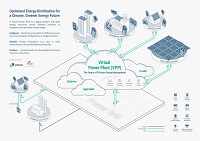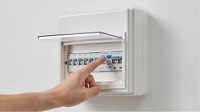We refer to Mr Alan Kiat-Leng Lee’s letter “Unsure if circuit breaker in flat meets requirement” (June 22).
Residual current circuit breakers (RCCBs) used to be known as earth leakage circuit breakers. Both serve the same purpose of preventing an electric shock by cutting off the electricity supply immediately when electrical current leakages are detected.
Since July 1985, all new homes have been required to have RCCBs installed. For residential premises built before 1985, most would have undergone renovations and had an RCCB installed.
There are various models of RCCBs in use today. They are typically installed in the distribution board box, usually located near the doorway or sometimes in the storeroom or bomb shelter of homes.
All RCCBs have a “Test” button, which may also be indicated as “T”. This button may also vary in shape and colour.
Homeowners can test their RCCBs by pressing the “Test” button, as outlined in the steps here: www.go.gov.sg/rccb-safety
To assist owners of HDB flats, the Housing and Development Board is installing RCCBs in one- and two-room flats completed before July 1985 that do not have these devices. The cost of installation is fully funded by the Government.
For three-room and larger flats completed before 1985 that do not have RCCBs, the Government will subsidise up to 95 per cent of the cost of RCCB installation for Singapore citizens.
HDB is progressively writing to homeowners to arrange for a visit to their flat to discuss the work required. These homeowners do not need to engage their own licensed electrical worker to do the installation. We advise them to wait for HDB’s letter, which they should receive by end-July 2023, and which will include helplines. HDB will also work with grassroots leaders to help homeowners such as the elderly.
We thank Mr Lee for his query, which we have since responded to, and for the opportunity to share more about RCCBs. Homeowners can email the Energy Market Authority at ema_enquiry@ema.gov.sg or visit www.ema.gov.sg/RCCB_Requirement.aspx for more information. HDB homeowners who require more information can call the HDB Branch Service Line at 1800-225-5432.
Yeo Cheng Hee
Director, Inspectorate Department
Energy Market Authority
Lawrence Pak
Director, Construction Productivity, Mechanical & Electrical Department
Housing and Development Board
Forum: Unsure If Circuit Breaker In Flat Meets Requirements
By: Alan Kiat-Leng Lee
All homes will be required to have a residual current circuit breaker (RCCB) installed by July 1, 2025, or face a fine (HDB and private homes must have a circuit breaker by July 1, 2025, May 13).
As I am unsure if the circuit breaker in my flat is an RCCB, I wrote to the Energy Market Authority (EMA) and my town council with a photo of my circuit breaker box. EMA has yet to reply to my query, while the assistant property manager from the town council sent a reply repeating what was said in the pamphlet that EMA had sent to households.
Considering the severity of the matter, it is frustrating that there seems to be no other avenue for assistance on this. Many residents would not know what an RCCB looks like, especially if it is different from the one shown in the pamphlet. Are residents expected to hire an electrician just to check and confirm that the circuit breaker works? That would come at a cost.
While I am in favour of the installation of the RCCB to help prevent electrical faults, the programme’s roll-out could have been done much better.















